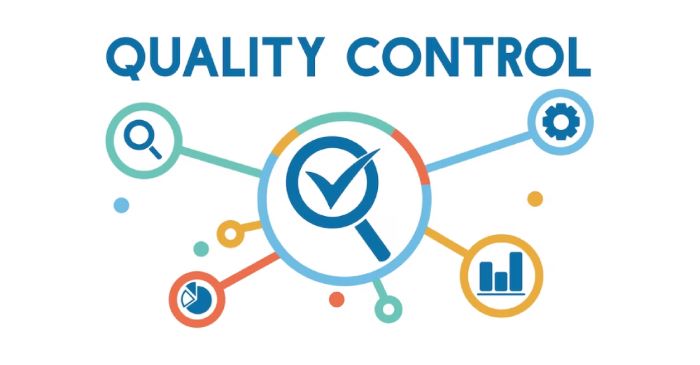Ensuring quality and consistency of goods and services, Quality Control Services play a vital part. These services have adapted significantly over time to advancements in technology and changing market needs. In this blog post, we’ll explore Quality Control Services’ historical development, examine current trends, and predict the future of this crucial industry.
Quality Control’s Humble Origins
Tracing Quality Control Services lineage reveals a centuries-spanning journey rooted in history’s annals. Before “quality control” became a term, ancient artisans and craftsmen pioneered quality assurance – meticulously ensuring their creations met excellence standards before reaching marketplaces. A rudimentary quality control form underscored the timeless, universal desire for excellence. The narrative dramatically shifted with the Industrial Revolution’s dawn. Marking a significant departure from artisanal approaches, this era ushered in mass production’s age. As factories proliferated and production volumes soared, the creator-creation intimate relationship faded, necessitating more formalized quality control processes’ development. This context laid modern Quality Control Services’ foundation.
One big change in quality control was in the 1900s. Ford Motor Company did new things with the assembly line. They started checking each car carefully to make sure it worked well and was reliable. This was new. Ford made quality control part of making cars. They set the standard for factories in the future.
Looking back, quality control aimed to make good products. Skilled workers long ago did quality work. During the Industrial Revolution, factories started checking quality systematically. Quality Control Services show how people kept working for quality and reliability over time.
The Rise of Statistical Methods in Quality Control
A revolution came when statistics entered Quality Control Services. In the early 1900s, experts like Walter Shewhart and W. Edwards Deming introduced new ideas. They used control charts and sampling methods to ensure precision. These statistical tools became vital for quality practices today.
Shewhart showed the way to spot problems before they grew. His control chart in the 1920s allowed companies to picture process stability. They could then tell common changes from special ones. It moved quality from guessing to analysis. Companies could fix issues early, before bigger trouble.
Deming built on Shewhart’s ideas. He said statistics should be used in all business parts. Problem-solving and bettering things steadily was key. His approach became the quality system companies follow today – Total Quality Management (TQM).
These men revolutionized quality control forever. No longer was it just reacting to mistakes. Using data, businesses predicted and reduced quality swings. Excellence in products became the new normal. Statistics had transformed quality. What was once reactive became preemptive. Through precision, analytics, and constant improvement, quality soared.
The Modern Era: Automation and Digitalization
Today’s Quality Control Services have leapt into an unimaginable future realm. Cutting-edge tech fused with tried methods birthed a new approach. Ensuring top-notch products and services are transformed totally. Automation and digitization reshaped the entire landscape in profound ways.
Machines do tedious tasks robots took over before. Automation makes checking quality faster. It improves precision and lowers mistakes. Machine vision technology is an improvement. Machines ‘see’ and ‘judge’ products accurately. Human eyes cannot match this perfect level. These systems examine product images. They consistently find defects, never tiring or being subjective.
Digital advances unleashed data analytics and artificial intelligence’s power for quality control. Understanding data to learn product quality insights was hard before. Now, AI predicts, identifies, even learns from defect patterns automatically. This streamlines quality control immensely. It enables foreseeing issues before production begins.
Together, automation and digitalization guide Quality Control Services to prevent defects permanently. They ensure an unmatched quality standard across industries, setting new excellence benchmarks.
Quality Control in the Service Industry
Quality Control Services expertise weaves into service industries seamlessly beyond manufacturing floors. This realm includes healthcare, hospitality, finance sectors. Quality control practices now frontiers where product tangibility is intangible experiences and outcomes remain excellence imperatives.
In health services, quality management is vital as it impacts people’s wellbeing – even small mistakes can seriously harm patients. In hospitality, quality control shapes delightful guest experiences where keen attention matters hugely for reputations. Finance demands strict quality control, mistakes could cause major financial losses or rule breaches.
Service providers now utilize advanced quality systems integrating regular audits, customer feedback, compliance checks. These dynamic tools adapt as customer expectations, regulations evolve – not mere checklists but holistic solutions recognizing service delivery nuances, unique challenges. Embracing these practices reflects a quality control mindset focused on experiences, perceptions, ensuring every interaction meets the excellence bar customers rightly demand.
Quality control transcends physical aspects, assuring outstanding service delivery, customer satisfaction.
Current Trends Shaping Quality Control Services
Cutting-edge quality control trends reshape the landscape, pushing possibilities. Big Data analytics lets companies dive deep into quality metrics, unearth fresh insights. Analyzing vast datasets, organizations precisely identify improvement areas, transforming raw data into actionable intelligence, vital competitive edge.
As technology advances, the integration of Internet of Things (IoT) devices revolutionizes quality control processes. IoT-enabled gadgets monitor production lines in real-time. They provide a detailed view of operations, ensuring issues are identified and addressed immediately. This seamless connectivity enhances efficiency and significantly reduces the chance of overlooking defects.
Additionally, quality control now focuses more on customer satisfaction. Companies gather feedback from social media and online reviews. They align quality control measures with customer expectations. This trend highlights transparency and responsiveness, reinforcing the importance of consumer satisfaction for quality improvements. As these developments unfold, they usher in a new era for Quality Control Services. Innovation, technology, and customer engagement converge to set new standards of excellence.
Conclusion
Looking ahead, Quality Control Services journey into uncharted territories. Relentless innovation and commitment to excellence drive this progress. Emerging technologies fuse with established methodologies, reshaping the landscape. It sets the stage for a transformative era where quality assurance transcends boundaries. The future promises AI-driven analytics, IoT-enhanced processes, and a customer-centric approach prioritizing satisfaction and engagement. Enterprises at the forefront will redefine industry standards. They will preempt quality issues, not just maintain it. The Quality Control Services narrative evolves, brimming with potential and possibilities. Adaptability and foresight will guide companies through challenges and opportunities.

